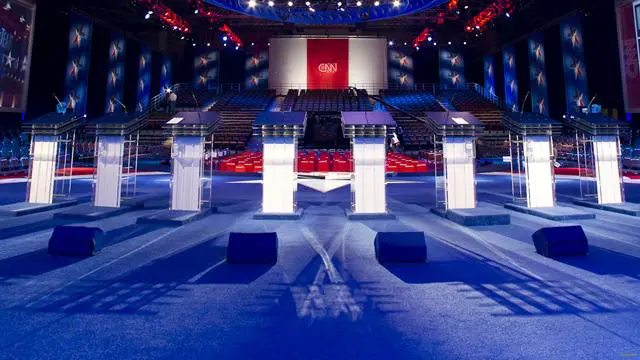With as many as four dozen Democratic candidates currently considering a Presidential run in 2020, the field could be the largest seen in years compared to prior elections. Behind the scenes, candidates are already starting to build out their staff with an eye toward national politics, and build out the necessary planning involved with plotting a course to the 2020 Democratic nomination.
Politico reports on the growing Democratic field, and what it will mean for the primary process:
“Most cycles you’ve got maybe four or five people starting this early. What’s different isn’t what people are doing, it’s how many. I talked to another consultant yesterday who is keeping a tally, and he said 53 different people or their staff have already talked to them about how to make this work,” said veteran Democratic operative Joe Trippi, Howard Dean’s 2004 campaign manager. “But even if it’s really 15, that’s a big difference from other years.”
…
Almost all the activity has been concentrated in Washington and the possible candidates’ home states, as they seek to build their teams under the radar, often beginning at the campaign manager level and following with finance staff, communications strategists and ad staff. As a result, high level alums of previous campaigns report being inundated with requests to chat from potential candidates and their confidants, while Democratic staffer email listservs are frequently peppered with entries that could turn into presidential campaign postings.
Obviously there won’t be 53 serious campaigns, but I don’t think 12-15 is out of the question. If you’ll recall in 2016, there was a huge field on the Republican side which created the need to hold separate debates, one for lower tier candidates, often dubbed the undercard debate, and one for the major candidates in primetime. It’s entirely likely we could see the same thing shape up for Democrats in 2020 given the interest and intensity among Democratic primary voters and their interests in defeating Donald Trump.
With this large of field, it’s also likely that we see several candidates jump in quickly after the 2018 midterms. We may see a flurry of announcements in January and February of 2019, while some of the bigger names will hold off until closer to April and May. In the 2016 cycle, Donald Trump didn’t announce until June of 2015, which was considered “late” when compared to his GOP challengers.
The time frame for announcing a campaign has moved up on the calendar partly for financial reasons. As soon as the campaign is formed, the fundraising can begin. Given what was spent in 2016, I’d expect 2020 to be equally as expensive, especially on the Democratic side where the money will be flowing and many outside groups will be pouring millions into the race against Trump.
Coumnist Frank Bruni, of the New York Times, argues that 2020 is shaping up to be a banner year for the Democratic bench. Whether they can deliver on a victory remains to be seen, but they have the personnel and personalities necessary to make an intriguing field:
My goal here isn’t to list and place odds on the 30-plus Democratic politicians and nonpoliticians who have given more than a smidgen of consideration to 2020 and aren’t completely delusional to have done so. There will be ample opportunity for that down the road.
I’m only arguing that optimism about 2020 makes more sense than pessimism. It’s just far less fashionable. What’s more, negativity is better directed at the party’s policies than at its personnel. I’m still waiting on a convincing economic plan, a distillable governing philosophy and a slogan less like a used-car salesman’s come-on than “A Better Deal,” which was the party’s most recent stab at pith.
But whatever the vulnerabilities and limitations of the five senators I already mentioned, most of them — plus others, including Amy Klobuchar and Sherrod Brown — could go the distance under the right circumstances. They fill a bench right there.
You need a second row for intriguing Democratic governors past and present, such as Deval Patrick, Andrew Cuomo and John Hickenlooper, whose surname crowds a lapel button but whose bona fides are desirable. He’s finishing a second term as the governor of a booming and deeply purple state (Colorado) and was an entrepreneur who made a small fortune in brew pubs. His book (“The Opposite of Woe: My Life in Beer and Politics”) came out in 2016, when he was on Hillary Clinton’s vice-presidential shortlist.
There’s a brainy cluster of Democrats under 50, and that’s reflected in an interesting bit of trivia. Three of them — Booker, Gov. Gina Raimondo of Rhode Island and Mayor Eric Garcetti of Los Angeles — were all Rhodes scholars together in the early 1990s, along with former Gov. Bobby Jindal of Louisiana, a Republican. That credential didn’t carry Jindal to his desired destination of 1600 Pennsylvania Avenue. Will one of the others have more luck with it?
In 2008, the field was quickly dominated by Barack Obama and Hillary Clinton. We know Obama won, and then went on to win the presidency in 2008 which meant there would be no Democratic primary in 2012. In 2016, Clinton scared away many smaller names and fought it out with Bernie Sanders for the duration of the primary. For the first time two cycles, the field is largely open, so we will finally see the next generation of Democrats stepping onto the national stage.
Donate Now to Support Election Central
- Help defend independent journalism
- Directly support this website and our efforts
